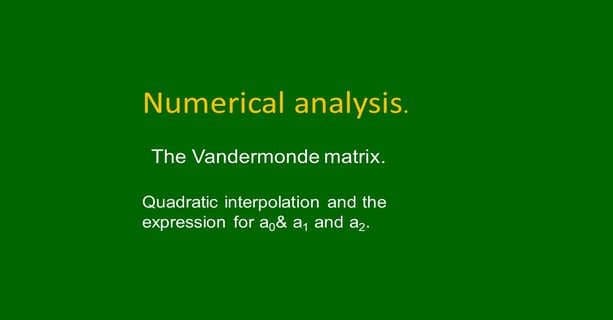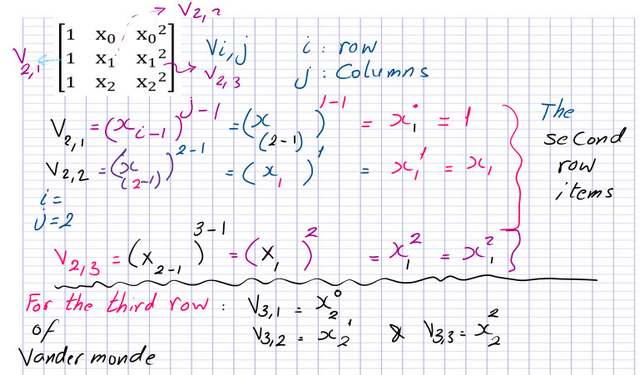Introduction to quadratic interpolation.
Quadratic interpolation is the process of using a second-order polynomial to make interpolation for a function.
Unlike linear interpolation which we have discussed in the previous post, quadratic interpolation requires the existence of three points.
The first point of the three points has a coordinate of(x0,y0 ), the second point has a coordinate of(x1,y1 ), and the last point has a coordinate of(x2,y2 )


What is the Vandermonde matrix?
After substituting in the polynomial matrix by the value of the different x and y of the given three points, we will have a set of quadratic equations with three unknowns a0,a1, a2. These equations can be written in a matrix form. The Form of V*X=Y is to be used, where V is the Vandermonde matrix, Xs is the column vector for the coefficients of a0,a1, and a2.y is the column vector of y values for the three points.


How do we derive the expression for the Vandermonde elements?
The Vandermonde matrix is in the case of quadratic polynomials is a(3 x 3) matrix, it can be written in the form of Vi,j =xi-1^j-1, where i is the row number and j is the column number, for instance,, V23=x2-1^j(3-1)=x1^2, V23 is the element in the second row and the third column, will be equal to the second power of x1. I have written by using that form of the different elements of the Vandermonde matrix for quadratic interpolation.


How to find the determinant value of Vandermonde matrix?
To get the determinant value of the matrix, we will let x0=0 by multiplying the second column by x0 then subtract the new result of that multiplication from the third column and place the result in the third column.
This is a continuation of the calculations.
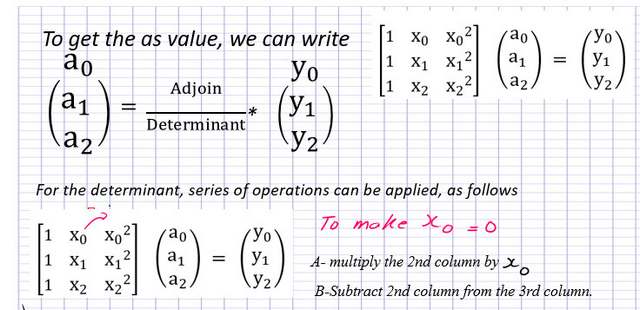

To get the determinant value of the matrix, we will let x0=0 by multiplying the second column by x0, then subtract the new result of that multiplication from the third column and place the result in the third column.
The process will be repeated by the first column by x0, then subtract the new result of that multiplication from the second column and place the result in the second column. The first row will have two zeros in the second and third columns, while for the second row, there will be a value=0 at the first column. Finally, in the third row, there will be a value=0 in the first column.
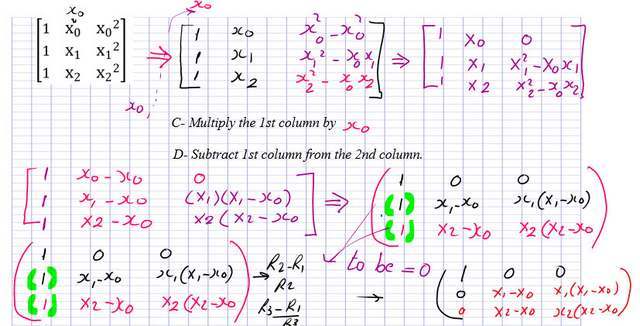

The final value of the determinant of the Vandermonde matrix can be found as (x2-x0)*(x1-x0)*(x2-x1).
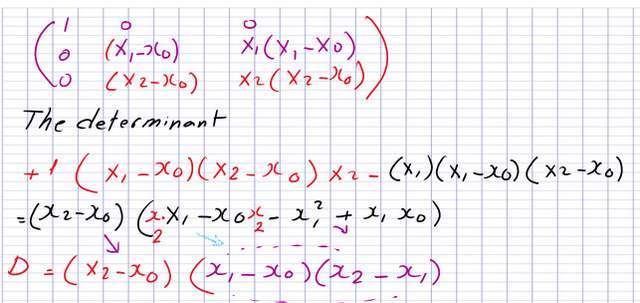

The process to get the inverse of Vandermonde matrix.
We want to find out the inverse matrix of Vandermonde, this is done by using co-factors and adjugate.


We will start to estimate the minors of matrix V. The next images will show the process of estimation for the minors of the first, second, and third rows.
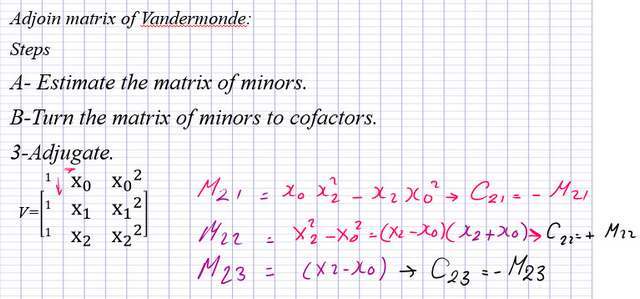

These are the values of the minors for the second row of the matrix. There are the values of the minors for the third row of the matrix.
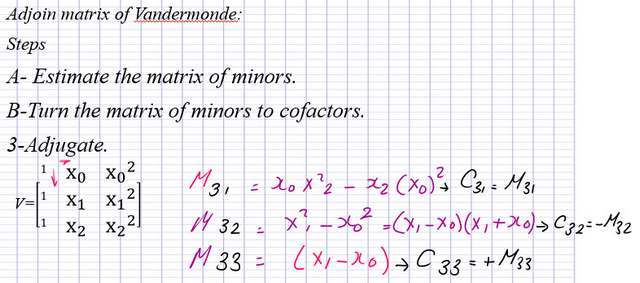

The step-by-step procedure is shown in the next slide image.


We can form the co-actor matrix, and factor (x2-x1) for the first column & (x2-x0) for the second column, and (x2-x1) from the last column.


To get the inverse of the V- matrix, we will divide the co-factor matrix by the determinant value, which we estimated earlier. The common factor will be canceled due to that division, and the final result of the inverse matrix can be found.
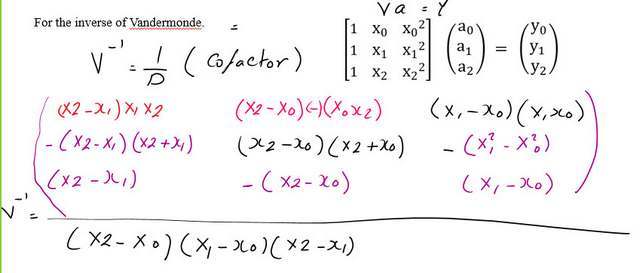

The final value of the coefficient matrix.
The last step is the multiply the inverse matrix V-1 by the X- X-matrix to find the value of the factor column vector.
In the end, we obtained these values, as shown in the last slide image.
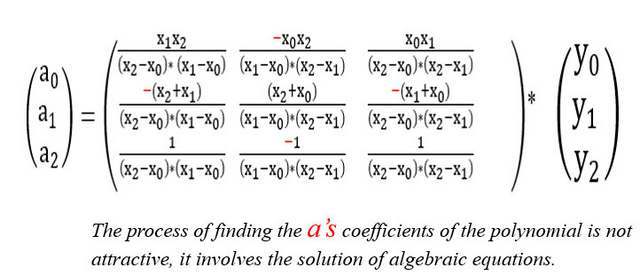

This is a link to the pdf file used to illustrate this post.
This is an external Useful external site– Mathonline.
The next post: Solved problems for quadratic interpolation.

